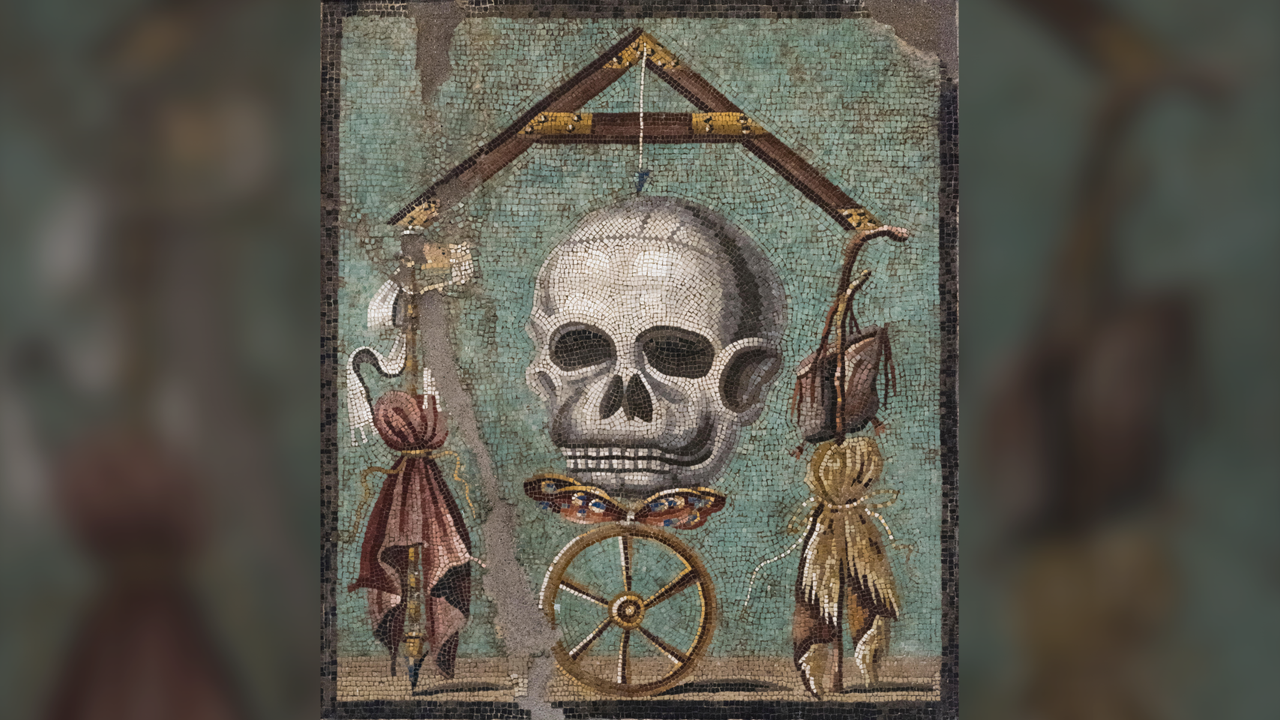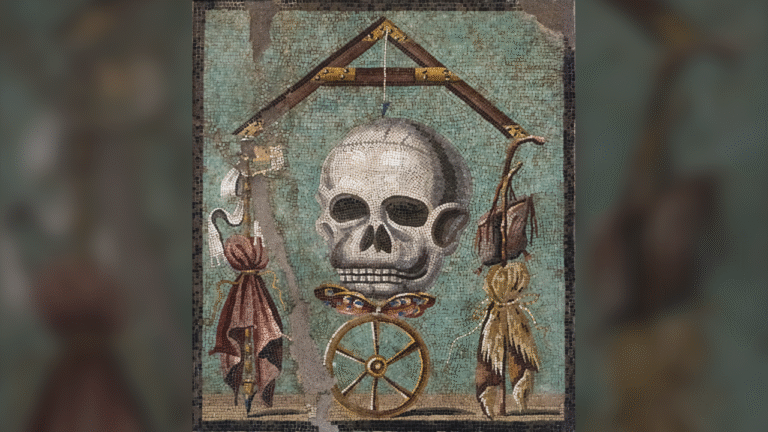
QUICK FACTS
Name: Memento Mori
What it is: Table mosaic
Where it is from: Pompeii, Italy
When it was made: Circa 50 B.C.
The stunning Memento Mori mosaic was found in a Roman house that doubled as a shop in Pompeii and is one of the most recognizable pieces of artwork from the ill-fated city.
The mosaic, which was excavated in 1874, measures 18.5 by 16.1 inches (47 by 41 centimeters) and is made from hundreds of small, colorful square tiles. In the middle of the mosaic is an obvious skull — perhaps from a monkey — but the rest of the imagery is often overlooked.
According to the National Archaeological Museum of Naples, which has the mosaic in its collection, above the skull is a level with a wire supporting a dangling plumb bob — a tool used to ensure construction is horizontally or vertically level. A colorful butterfly rests underneath the skull, possibly a metaphor for the soul. Beneath them, there is a wheel that likely symbolizes fortune. Flanking the skull, tied to the ends of the level, are a scepter and purple cloak on the left and a beggar’s stick and a saddlebag on the right. This juxtaposition suggests that power and wealth on the one hand are in perfect balance with poverty on the other.
“The mosaic’s subject represents a warning to the homeowner,” according to a translated explanation in Italian from the museum. “One can be rich or poor, but in the end, facing death, we will all be equal.”
The mosaic was found in the triclinium, or dining room, of a house that had been converted into a leather tanning business. Based on a charcoal inscription near the entrance, the property may have belonged to a man named M. Vesonius Primus. In addition to the tannery, which was the only one found in Pompeii, Vesonius owned a fullery, which dealt with cleaning and dyeing clothes. The mosaic may have encouraged Vesonius to memento mori — remember that you will die.
MORE ASTONISHING ARTIFACTS
Skull art depicting Memento Mori continued to be popular in Europe for millennia. For instance, archaeologists have found a gold Memento Mori ring dating to Tudor England and a Renaissance-era Memento Mori ring from Germany.
Although Vesonius, like thousands of other Romans, likely escaped the eruption of Mount Vesuvius in A.D. 79, his guard dog was discovered in the rubble, contorted as if trying to free himself from his collar and chain.
For more stunning archaeological discoveries, check out our Astonishing Artifacts archives.


